Holistic ideas can aid investment
 |
| Adam Sitkoff, executive director American Chamber of Commerce in Hanoi |
It is incumbent upon the business communities of both countries to capitalise on this momentum to unlock higher levels of two-way trade and investment, while working with both governments to break down the challenges and obstacles standing in the way.
The United States is Vietnam’s second-largest trading partner, its largest export market, and one of the top drivers of investment here. Vietnam has risen to become a top-10 trading partner of the US, and the economic relationship between the two countries is expected to continue its rapid growth. Vietnam is increasing its attractiveness as a destination for American investment as many companies seek to diversify their global supply chains.
I believe the most important factor for a favourable investment climate is a fair, predictable, and streamlined regulatory environment that values innovation - not only to draw in new investment, but also to maintain and grow the investment already here. There is no doubt that existing investors expanding operations is the best advertisement to engage new investment.
Although there are uncertainties in the global economy, there are many things the government can do right now to improve the business and investment climate that will help increase productivity and reduce the costs, complications, and risks of doing business in Vietnam.
There are always ways to improve the business climate, and we appreciate Vietnam’s efforts to streamline administrative procedures. However, some regulations continue to introduce new administrative procedures such as licensing, approvals, and heavy reporting requirements.
I encourage the Vietnamese government to clarify those elements of Vietnamese law that hinder the efficient deployment of foreign investment, and that any additional administrative burdens in draft laws and regulations be carefully considered and avoided whenever possible.
Crucial to many US manufacturers choosing Vietnam is the ready access to renewable power. Any plans for expansion of current facilities or supply relocations should include green energy solutions. To achieve its zero-carbon goal by 2050, Vietnam should prioritise energy sources that are both affordable and socially sustainable.
This process will require financial and technical support from external sources – and the projects need to be realistic and bankable. Vietnam should eliminate current regulatory uncertainties to unlock substantial international capital waiting on the sidelines. We know that new power grid projects will attract investment and expand the capacity of Vietnam’s renewable energy sources, providing safe and reliable energy supply for both residential and commercial consumers.
The American Chamber of Commerce (AmCham) appreciates the Vietnamese government’s effort to support the country’s transition to a digital economy. Our members work actively to support this transformation, both with Vietnamese partners and through their own projects.
We urge the government to take a holistic approach and global view in developing a digital regulatory framework. The free flow of data across borders, and access for Vietnamese users to global-standard services and data protection, are vital to that transition.
I see tremendous opportunities for American investors here, although getting promised investments to actually happen is often challenging in today’s globally competitive environment. Attracting new foreign investment requires continuous improvements in infrastructure development, protection of intellectual property, education reform, health and wellness policies, legal and tax policy certainty, and enhanced transparency in Vietnam.
AmCham looks forward to partnering with the Vietnamese government to navigate these challenges and improve business conditions that strengthen the private sector, ensure sustainable economic and social development, and promote prosperity here. Progress in these areas will not only help attract more foreign investment, but will also support Vietnam’s aspirations to propel itself to the next sphere of economic competitiveness.
This year marks 30 years of AmCham in Vietnam, and together AmCham members represent billions of US dollars in foreign investment, tens of thousands of direct employees, hundreds of thousands of indirect employees, and a significant share of Vietnam’s exports and tax revenues.
American companies have an interest in Vietnam’s continued success. In this regard, I will continue to work on lowering barriers to trade, to help the Vietnamese government make it easier to do business, and to create a high-standard, transparent, and stable business environment.
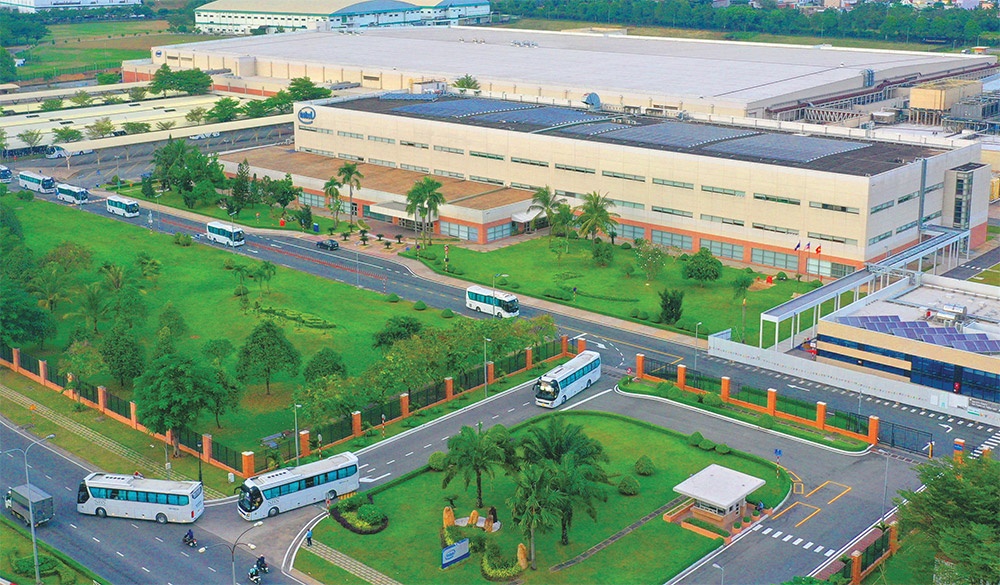 |
| President Joseph R. Biden and General Secretary Nguyen Phu Trong reaffirmed the importance of economic, trade, and investment cooperation and innovation-driven inclusive economic growth as the core foundations and sources of momentum in the bilateral relationship. Both sides pledged to create favourable conditions and facilitate the further opening of markets for each other’s goods and services, support trade and economic policy, and regulatory measures to achieve this aim; and to address issues such as market access barriers via the Trade and Investment Framework Agreement. The United States applauds Vietnam’s progress in significant market-based economic reforms, and affirms its enthusiasm and commitment for a broad, strengthened, supportive, and constructive engagement with Vietnam in its transition to a market economy, and subsequently to market economy country status, under US law. The US noted Vietnam officially requested the review of its market economy status on September 8, 2023. The US will review Vietnam’s request as expeditiously as possible, in accordance with US law. The US appreciates Vietnam’s ongoing efforts to further modernise and enhance the transparency of its monetary policy and exchange rate management framework, to promote macroeconomic stability, and to ensure the safety and soundness of the banking system. The leaders will continue strengthening a non-discriminatory, open, fair, inclusive, equitable, transparent and rules-based multilateral trading system with the World Trade Organization at its core. Both sides applauded the progress thus far and look forward to additional substantial progress in the near future under the Indo-Pacific Economic Framework for Prosperity, which will deliver concrete benefits to the economies, workers, families, and businesses of the two countries and the region. The US pledged further support for Vietnam in manufacturing, high-quality digital and physical infrastructure development, just energy transition, sustainable and smart agriculture, and broader and sustained participation in regional and global supply chains, with a particular emphasis on Vietnam’s Mekong Delta region. To that end, the US International Development Financial Corporation intends to continue to finance private sector projects in Vietnam’s infrastructure, climate and energy efficiency, healthcare, and small business sectors, including climate-focused and women-owned enterprises. Vietnam and the US decided to strengthen science, technology, and digital innovation cooperation, regarding this as a new breakthrough of the Comprehensive Strategic Partnership. The US affirmed its commitment to increasing support for Vietnam in the training and development of a high-tech workforce. Acknowledging Vietnam’s tremendous potential as a major player in the semiconductor industry, the two leaders pledged to support the rapid development of Vietnam’s semiconductor ecosystem and to work together energetically to improve Vietnam’s position in the global semiconductor supply chain. Towards this end, the US and Vietnam announced the launch of semiconductor workforce development initiatives - supported by initial seed funding of $2 million from the US government, in conjunction with future Vietnamese government and private sector support. Vietnam and the US pledged to comprehensively cooperate in promoting innovation and entrepreneurship. The two leaders applauded the promotion of secure and reliable digital infrastructure in Vietnam, affirming its potential to provide new opportunities for digital capability enhancement to Vietnamese innovators to expand the growth of Vietnam’s digital economy. These efforts will aim to include support for open and interoperable network architectures including through exploring the launch of an open radio access network in Vietnam, secure 5G, and adoption of emerging technologies to provide new digital upskilling opportunities to Vietnamese innovators, subject to congressional notification. *Excerpt from joint leaders’ statement on raising US-Vietnam relations to a comprehensive strategic partnership, September 2023 |
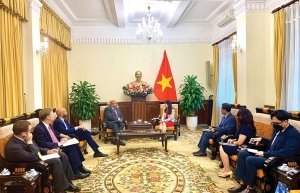 | Building US-Vietnam ties via trade As the United States and Vietnam will approach the 10-year anniversary of the Comprehensive Partnership, it is an exciting time for our bilateral relationship and the United States’ engagement with the broader Southeast Asia region. |
 | Building on far-reaching US-Vietnam cooperation As we welcome a new year, we at the US Mission in Vietnam take this opportunity to wish the Vietnamese people every joy and happiness in what we hope will be a very prosperous year filled with blessings and good fortune. During this special time of year, we reflect on the bonds that bring together friends and family, as well as the growing ties that unite our two countries and our peoples. |
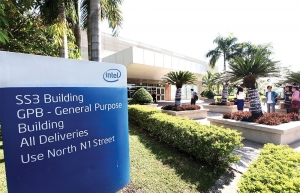 | Deals bode well for US-Vietnam ties The new economic cooperation framework involving the United States and Vietnam, and the updated version of a trade and investment deal, are set to drive bilateral ties forward. |
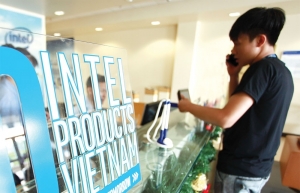 | Landmark year for US-Vietnam relations The road for Vietnam and the US to officially raise their existing comprehensive partnership to a strategic one is looming large, expected to help both economies to further increase both their investment and trade ties. |
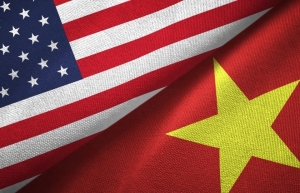 | Momentous year for US-Vietnam relations Vietnam and the US are beginning to materialise their comprehensive strategic partnership, with economic security cooperation prioritised, particularly in the semiconductor and supply chain ties. |
What the stars mean:
★ Poor ★ ★ Promising ★★★ Good ★★★★ Very good ★★★★★ Exceptional
Related Contents
Latest News
More News
- Global partnerships key to Vietnam’s IFC development (December 26, 2025 | 16:18)
- Vingroup pulls out of bid to invest in North-South high-speed railway (December 26, 2025 | 11:42)
- Strengthening supply chains through trade promotions and customs reform (December 24, 2025 | 14:00)
- PM orders investment model for North–South high-speed rail (December 22, 2025 | 17:43)
- LS Eco Energy to invest in Vietnam rare earth sector (December 22, 2025 | 17:31)
- Government moves to establish International Financial Centre (December 21, 2025 | 21:00)
- Vietnam's IFC to target global investment flows (December 21, 2025 | 18:00)
- Two national hospitals expand capacity with new facilities (December 20, 2025 | 09:00)
- Ha Tinh breaks ground on major Vingroup industrial and energy projects (December 19, 2025 | 18:24)
- EVN launches major power infrastructure projects nationwide (December 19, 2025 | 18:17)

 Tag:
Tag:




















 Mobile Version
Mobile Version